Shopping in Downtown Manchester Circa 1835 - at Fargo & Fargo! Part Two of Two
by Ray Berg
The Fargo Path to Manchester
Our Fargo brothers descended from a large family whose ancestry is well documented on the Internet back to France (Jacent Fargeau, born about 1622). Moses Fargo, the first immigrant, landed in Connecticut in 1668, and our part of the extended family eventually made its way to Onondaga County, New York, settling around the towns of Pompey, Borodino and Spafford, all near Syracuse. The first Fargo family in our area (a Calvin Fargo) located in Ann Arbor in 1825, purchasing land from the founders of that city. A sister of our three Fargo brothers (Mary Jeanette Fargo) married Richard Lord and then Thomas Spafard, early pioneers in Sharon Township and Manchester. The father of our Fargos, Daniel Fargo, eventually followed his sons from New York, lived in Tecumseh for awhile, and then ended up in Greenville, Montcalm County, Michigan where he died in 1857. There are other Fargos who pass through Manchester briefly, but don’t stay long. So we’ll look deeper at Stephen, James and Alonzo, and what they were involved in and contributed to Manchester’s early days.
Stephen Fargo
When looking through deeds and other public records, it is clear that Stephen was the business driver, the consummate entrepreneur, and the risk-taker. He never married, and apparently never took part in social, government or other “non-business” activities. He did all his investing in partnership with others. He lived in Tecumseh from 1833-1841, and apparently moved to Manchester only after the sudden death of his brother James in late 1840. After his brother’s estate was cleared and he sold the Manchester Mill operations in 1841, he moved on to Indiana around 1845 and set about building a new highly prosperous mill operation. He did return back to Michigan as a “retired” passive investor to live with his brother Alonzo in Grass Lake, where he died in December 1873.
James Harvey Fargo
James came into Manchester in 1833 to open and run Stephen’s “branch store” of Fargo & Fargo Co. (Tecumseh was the business headquarters throughout the 1830s). It was James who became deeply involved in Manchester government and social activities. He married Elizabeth Kief, daughter of Artemus Kief, another of the earliest settlers. He was elected the first Supervisor of Manchester Township upon its creation on April 3, 1837, and served through 1839. In perhaps an early example of the need for better county recognition of Manchester’s needs, he ran for Washtenaw County Sheriff as a Democrat on November 3, 1840, only to lose by 369 votes in the Whig Party political sweep of that year. He also led Manchester educational and social development in the 1830s.
By September 1837, James and his wife Elizabeth, Stephen Fargo, and a pair of investors, Shepherd and Catherine Knapp of New York City, were the actual owners of the roughly 440 acres purchased from John Gilbert in 1835, which comprised what is now the downtown residential and commercial areas of Manchester. The September 27, 1837 second plat of Manchester Village, while probably reflecting John Gilbert’s initial input, was clearly the primary design work of James, but received the approval of the other investors in late 1836. James’ instructions on the platting of the village street widths, common areas and retention of existing rights were explicit in this deed, including the confirmation of the name “Exchange Place” for our downtown.
James died unexpectedly on November 16, 1840, while only 37 years old and just two weeks after the sheriff’s election he lost. He was initially buried in the original “Burying Ground”, but later moved to Oak Grove Cemetery. His passing led to local Fargo influence transferring to his younger brother Alonzo.
Figure 5 - The Grave of James H. Fargo in Oak Grove Cemetery
The current Manchester home at 121 W. Main has been historically attributed to James Harvey Fargo, constructed circa 1835 from the Carr brick works. It is believed that James, Stephen and Alonzo all lived here at some point.
Figure 6 - The Fargo Homestead at 121 W. Main, Built Circa 1835
Alonzo Fargo
Alonzo was about 15 years younger than Stephen and James, and he first shows up in the 1845 Manchester census. It appears Alonzo took over the general store operations after James’ passing, but had no involvement in the Manchester mills. Alonzo formed several mercantile partnerships in Manchester throughout the 1840s and 1850s, primarily with Kief family members and then with George C. Lord, his cousin. Alonzo lost his first wife, Emily Caldwell Fellows, on April 3, 1848 at age 22, and she is buried in the original Manchester Cemetery (“the Burying Ground” on Washington Street). Their mercantile business was likely destroyed in the May 1853 Manchester fire, for by 1855 Lord & Fargo Co. has moved to Section 9 of Columbia Township north of Clark Lake, and then by 1856 they are beginning major investments in the Village of Grass Lake. From 1858-1878, Lord & Fargo was the premier business in Grass Lake, running a large general mercantile operation, grain mills, drovers, railroad shipping operations, and building ownership and rentals. For reasons not yet determined, their business operations ran into serious trouble in 1878 and bankruptcy was declared. Alonzo then became an express shipping agent in Grass Lake (our Fargos were cousins to the William G. Fargo of Wells Fargo Co.). But by approximately 1885, Alonzo and his second wife Caroline had relocated to Seattle, Washington with his stepdaughter’s family, where Alonzo died sometime before 1889.
The Descendants
Stephen had no children. James had two sons – William Harvey Fargo and Charles Briggs Fargo. They, and their mother, lived with the Kief family in Manchester throughout the 1840s after James’ death. But by 1855, Charles had moved to Cleveland, Ohio (reason unknown), where he lived out a relatively uneventful life and did not return to Manchester. William Harvey moved to Jackson in 1851, clerking in several stores, then went to Cleveland in 1857 for six years, then returned to Manchester to marry Ellen Gilbert in 1864, and then spent his life in Jackson as a renowned accountant and financial advisor. They had one son, William G. Fargo, born 1867. William H. Fargo only returned to Manchester to visit the Gilbert family and to be buried here upon his passing on June 11, 1906 at age 71. His wife Ellen S. Gilbert Fargo had passed away April 15, 1902.
Figure 7 - Charles B. Fargo, Circa 1855 – The Oldest Located Fargo Photograph
Alonzo had a son Edward with his first wife Emily, who became a bookkeeper first in Grass Lake and then in Lansing, passing away around 1930. Alonzo had a daughter Josie with his second wife Caroline Fisher in Grass Lake, but Josie disappears from public records after her marriage in 1876.
So by about 1855, all of our male Fargos are gone from Manchester. Yet the one grandson of James, William G. Fargo, carried with him a love for his ancestral village and a desire to preserve some of its earliest history, which is how we know so much about these early days.
William G. Fargo
William G. Fargo was born December 6, 1867 at Jackson, the only son of William H. Fargo and Ellen S. Gilbert, and died February 2, 1957. William had an astonishing career as a civil engineer and surveyor. As the founder of Fargo Engineering Company of Jackson, he was a renowned developer of dams and hydroelectric power plants throughout Michigan, and was instrumental in the formation of Consumers Power Company. He developed the first planning maps of the City of Jackson, and the first Zoning Ordinance for Jackson. He was also a famed paleozoologist, and held curator and research positions in zoology and birds at the University of Michigan in his later life.
But he also had an innate love of Manchester, and, while never living here, made frequent visits, probably seeking his emotional “roots” in the Manchester Mill dam and structures, which he wrote about on his visits. He preserved the previously described mill and store ledgers, and wrote extensive genealogical information, which is kept at the U of M Bentley and the Michigan Historical libraries. The value of these papers has been critical to the preparation of these articles.
William G. Fargo never married, and it appears that no survivors remain of any of the male Manchester Fargo lines. Perhaps knowing this, he preserved the ledgers and other papers. But in a strange twist, he wrote to a Manchester step-cousin in the 1950s that because he was a sole child and a single man, and thought no one cared about the family photographs he had acquired, he had destroyed the Fargo photograph albums but donated the written records to the libraries! So probably photos of Stephen, Alonzo, and William H. Fargo were destroyed. But we continue to search for other photos of the Fargos and also daguerreotype photos of early downtown Manchester.
Figure 8 - William G. Fargo (1867-1957)
The Lyceum
Among his many civic and business duties, James Harvey Fargo tried one other thing. He was the founder of the Manchester Village Lyceum in 1836. This debating society sought to promote the study of “moral, political, scientifical, and literary” issues in the Village. Among William G. Fargo’s bequests was the preserved journal of the Lyceum.
We noted earlier in the ledgers preserved from Manchester’s early years that:
- The Fargo & Fargo general store ledgers show a very rapid growth in early Manchester village and surrounding areas once John Gilbert got things started, as determined by the hundreds of accounts opened up beginning in 1833. The speed of settlement is surprising, but may have been caused by the strong degree to which the settlers generally knew each other back in New York State, coming from the same New York towns. In other words, they generally came as family or neighbor groups to Manchester, not as individual pioneers one by one. The Gilberts, the Fargos, the Kiefs, etc. came as a planned group.
- The diversity of goods available at the Fargo & Fargo store extended well beyond the basic staples you might expect at an 1830s general store, including luxury items like silk, perfumes, and foreign teas. These were available from the store’s beginning in 1833. Our ancestors did not want for the finer things in life, and apparently had come to Manchester with money, not necessarily as struggling pioneers. Many had come because of the Anti-Masonry movement which erupted in 1830-1831 in central New York, and committed Masons such as Gilbert and the Fargo brothers simply decided to leave New York, and go elsewhere and multiply their money!
- And cultural influences came right along with the money and way of life! We learned that James Harvey Fargo had a strong influence in the development of early Manchester Village, its platting, and early governance (he served as first Manchester Township Supervisor from 1837-1839). He ran the successful and very profitable Manchester Mill and the General Store (the 1830s were boom times for mills in Washtenaw County). His premature death in November 1840 interrupted his influence and leadership, but the available records carry one other item of interest he brought to Manchester – the Manchester Village Lyceum.
Figure 9 – Earliest Known View of Manchester – Circa 1855
The Lyceum Movement
The Lyceum movement in the United States during the general period 1826-1860 was a series of organizations that sponsored public programs and entertainment. It flourished particularly in the northeast and midwest, and was named after Aristotle's Lyceum in ancient Greece, which was the school outside Athens where Aristotle taught in the third century B.C. Lyceums and agricultural societies were important in the development of adult education in America, and improving the social, intellectual, and moral fabric of society. The Lyceum movement was particularly influenced by the development of the Erie Canal and the railroad, which allowed noted lecturers and entertainers to easily travel from city to city. After the Civil War, lyceums evolved into the Chautauqua movement and vaudevilles, and became more entertainment and elaborate. The first American lyceum was founded by Josiah Holbrook in Massachusetts in 1826. The mark of an up-and-coming American town in the 1830s and 1840s was to start a lyceum. Manchester was no exception.
The Manchester Village Lyceum
Clearly James Harvey Fargo had experienced the lyceum movement, for he organized the Manchester Village Lyceum on Saturday evening, November 25, 1836 at the Manchester Village schoolhouse. He felt strongly that culture and adult education were an important part of life in the new village, and recruited several prominent citizens to participate. Sitting as Chair for the organizational meeting, he led the membership through the development of Articles of Organization which he had previously drafted. The “objects” of the Lyceum were stated as “the discussion of morral, political, scientifical and literary questions”.
Figure 10 – Page 1 of the Articles of Organization, Manchester Village Lyceum
Provisions were made for weekly 6:00 PM Saturday meetings, for lamp oil and candles, and for “some boy to light the fires in the schoolhouse” prior to the meetings. The articles also called for the collection of funds, and for the appointment of debating teams (affirmative and negative), whose arguments would be heard and an outcome decision made by the presiding President. Presidents held four week terms. Dues were 25¢ at initiation.
The initial membership list is shown in Figure 11. It’s an early glimpse at 1830s era residents who were interested in this intellectual stimulation. At the next meeting, Messrs. Lamb, Huff and Norris joined. Another member who joined was James W. Hill, the first settler of Freedom Township. Hill had to ride a horse four miles into Manchester on a winter’s night to participate!
Figure 11 – The Founding Members of the Manchester Village Lyceum
The Debate Topics
So what did they discuss? Twenty-six questions for debate were initially proposed by individual members and a Committee of Questions. Here are some of them the group came up with (not all were eventually debated, as we’ll see):
- Which is the greatest source of wealth to the people of the U. S. – agriculture or manufacturing? (introduced by James H. Fargo)
- Do the works of nature excite man more than those of art? (Committee of Questions)
- Ought the sale of ardent spirits be prohibited? (Committee of Questions)
- Is ambition more deleterious to the world than superstition? (J. Fargo)
- Do the rich enjoy more happiness than the poor? (L. M. Pike)
- Ought Michigan be admitted into the Union without compromise? (A. Walker)
- Does anticipation afford more happiness than participation? (L. M. Pike)
- Are debating societies useful? (A. W. Morris)
- Have we conclusive evidence of the immortality of man? (Marcus Carter)
- Were Brutus, Cassius and their associates justified in taking the life of Caesar? (M. Huff)
- Is yearly spirit in a Republican Government salutary? (J. H. Fargo)
As can be seen, topics ranged from very practical and timely, to quite ethereal and classic. The topic would be assigned one week ahead, and one or two members would be tasked with preparing and presenting affirmative and negative arguments. Arguments were presented at the next lyceum meeting, and the President would then often call for open discussion, but had final responsibility for deciding for the affirmative or negative.
An interesting topic debated in late 1836 was “Is War Justifiable?” The topic was debated extensively without clear resolution, until the Committee of Questions modified the question to “Is War Justifiable to Instill Democratic Principles in an Oppressed Country?” The context of this debate question was most likely the beginning evolution of Manifest Destiny. This policy germinated in the later years of Andrew Jackson’s presidency (his term was coming to an end at that point), the recent war over Texas in 1836, and the perception among some that America had a God-given right (duty?) to spread democratic principles in places like “oppressed” Mexican territories. Walker Morris and James Fargo argued the affirmative, and Marcus Carter and L. M. Pike the negative.
President Emanuel Case, Esq. decided in the affirmative on November 30, 1836. A precedent for future American debates on invading other countries had been set in Manchester.
James W. Hill, a lawyer as well as a farmer, proposed a topic on February 8, 1837, which led to heated debate and an overflow crowd in the schoolhouse:
Is the statute law which imposes a fine and imprisonment on any person who may deny the being of a God, or speak reproachfully of Jesus Christ, the Holy Ghost, the Christian religion, or the books of the Old and New Testament, or shall expose or ridicule any of them, consistent with natural liberty, the freedom of speech, and the freedom of the press?
President Marcus Carter, upon hearing all the arguments that night, decided in the affirmative.
Aftermath
Something happened after this. On February 15, 1837, at its next and 12th meeting, the Lyceum members voted to suspend operations until “later in the season”, specified as the second Monday of November next (i.e., nine months hence).
The Lyceum never reconvened. What may have happened? Did Hill’s topic arouse too much anger and ill feelings? 1837 turned out to be an eventful year locally and nationally. Michigan was admitted to the Union. Manchester Township was formed by breaking off from Bridgewater Township. James H. Fargo took on the role of Township Supervisor. But what really may have distracted the esteemed members of the Lyceum was the financial panic and economic depression which followed the “Wildcat Bank Fiasco”.
These bank failures were caused by federal laws (or lack thereof), and subsequent state banking laws, which allowed the formation of local banks and the issuance of local paper money supposedly backed by gold deposits. Manchester was not immune – it had proudly formed the Bank of Manchester (see Figure 12). Many of Manchester’s prominent citizens invested or participated in this bank, which failed spectacularly when caught in a massive fraud. The shock clearly disturbed the community’s financial roots, and participating in a weekly Lyceum may not have been at the front of their minds anymore. Anyways, the Lyceum register ends abruptly and there is no evidence it ever started again. And we really don’t know why.
Figure 12 – Bank of Manchester $5 Note - 1837
In a future article, we’ll look at the complete history of the Bank of Manchester in the 1830s, and what its impact meant to our local community.
Written by Ray Berg
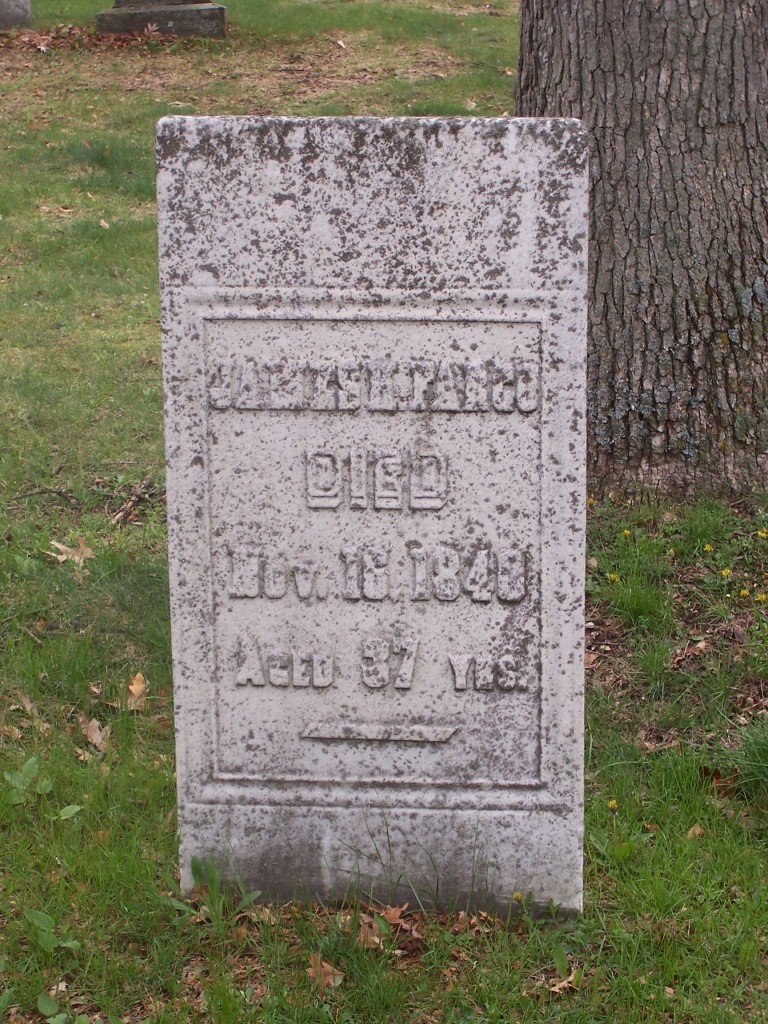
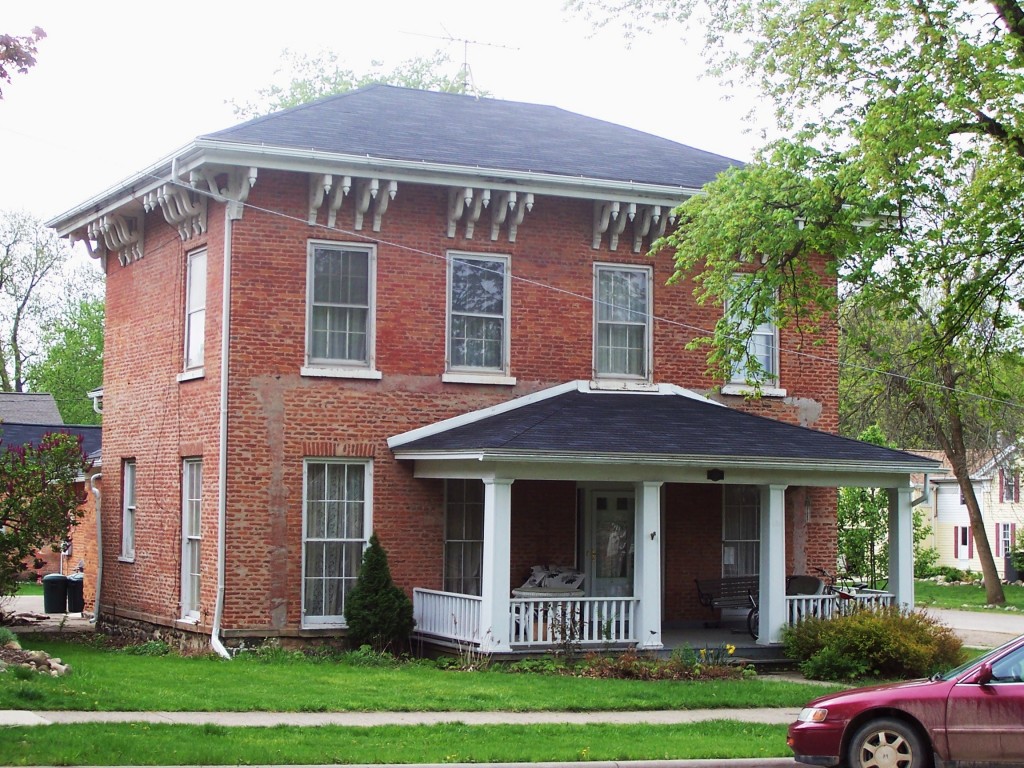
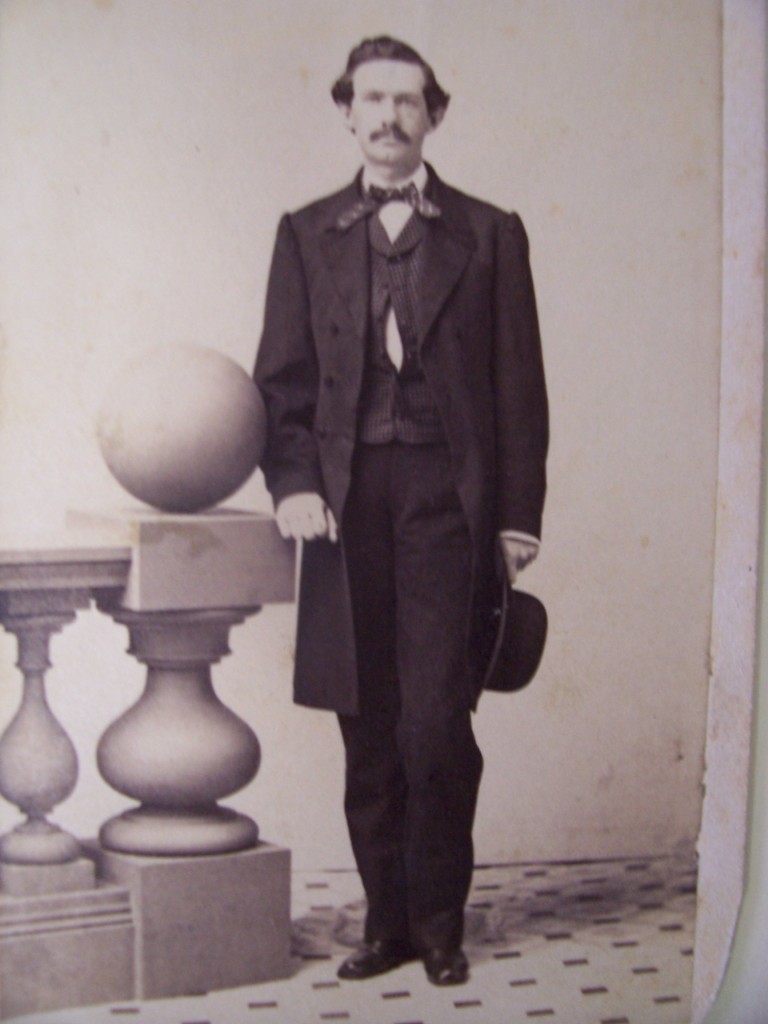
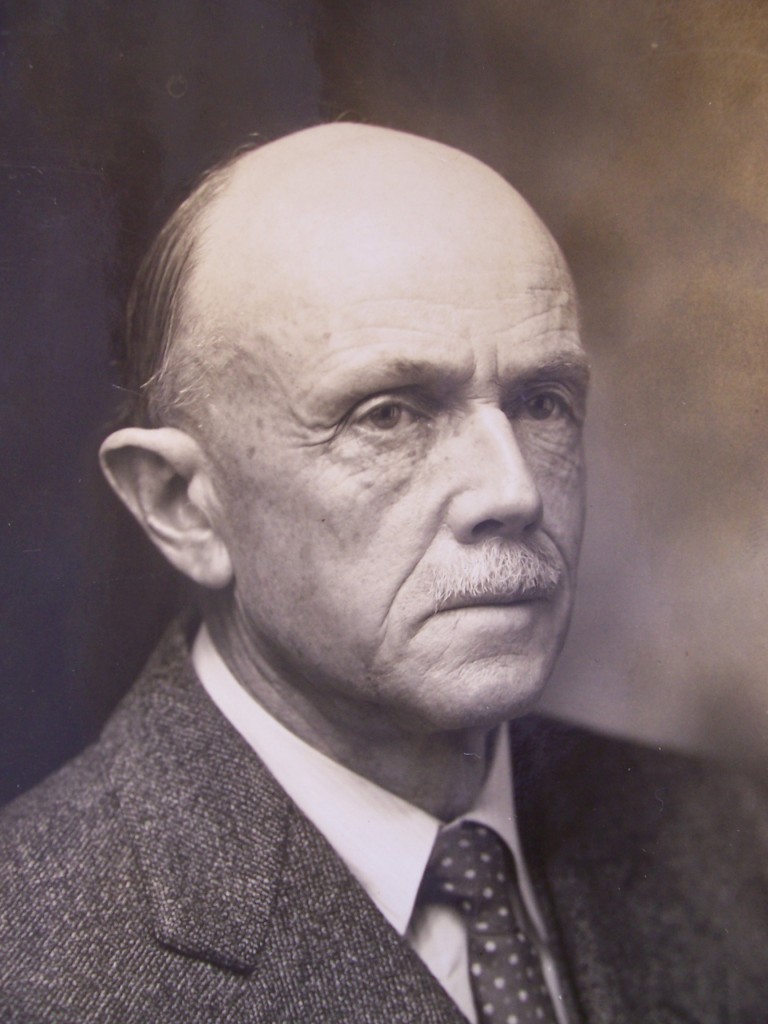
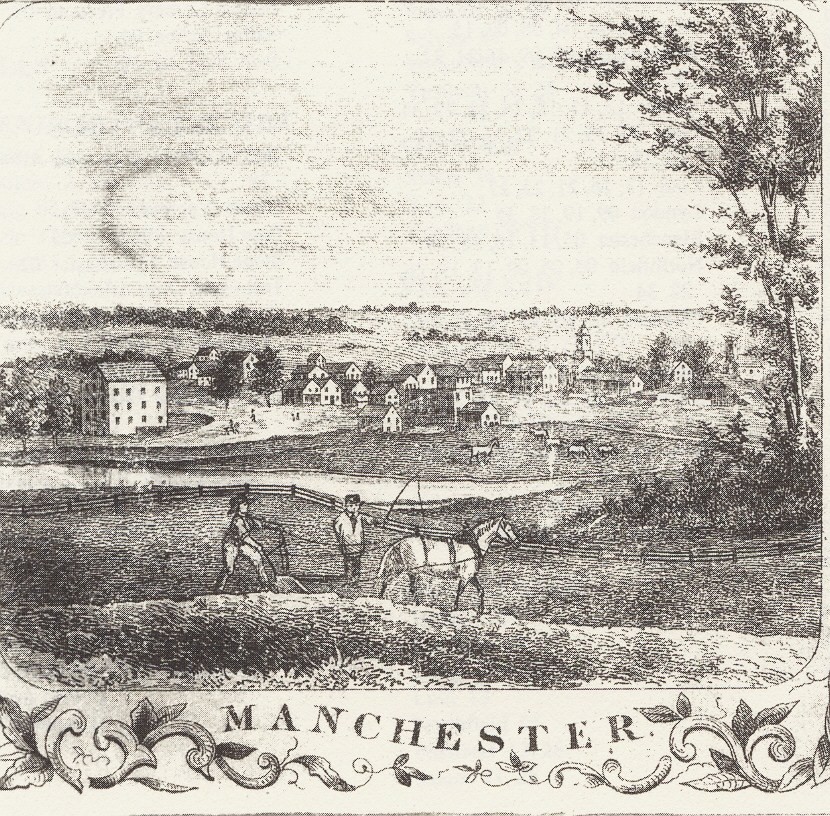
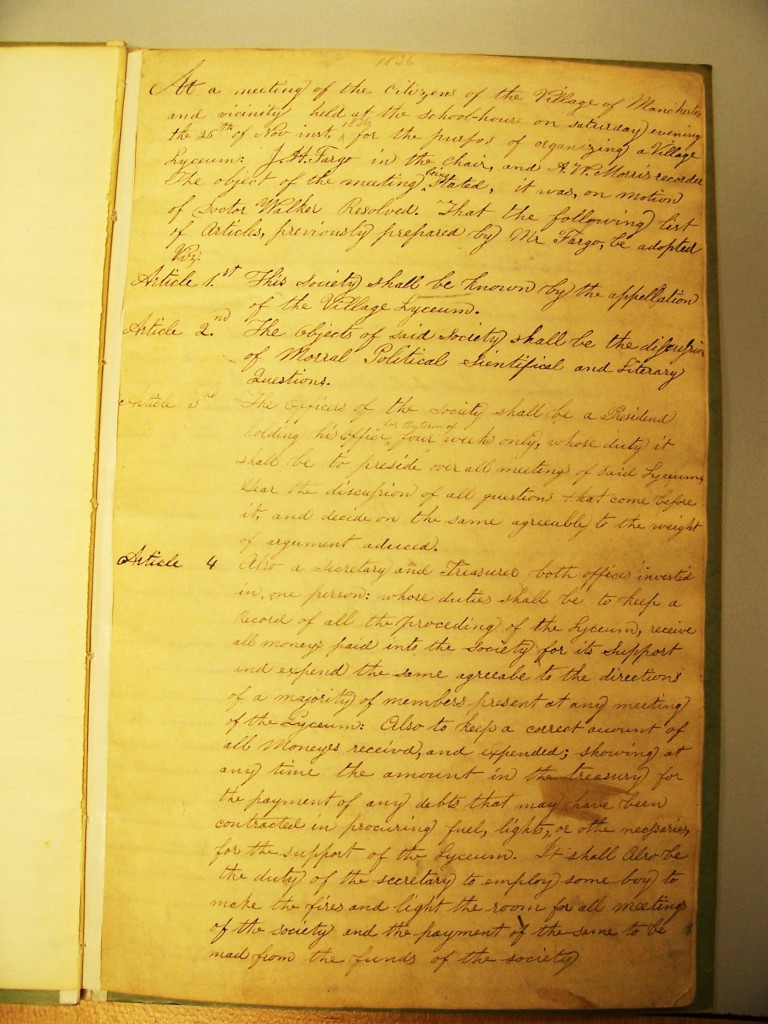
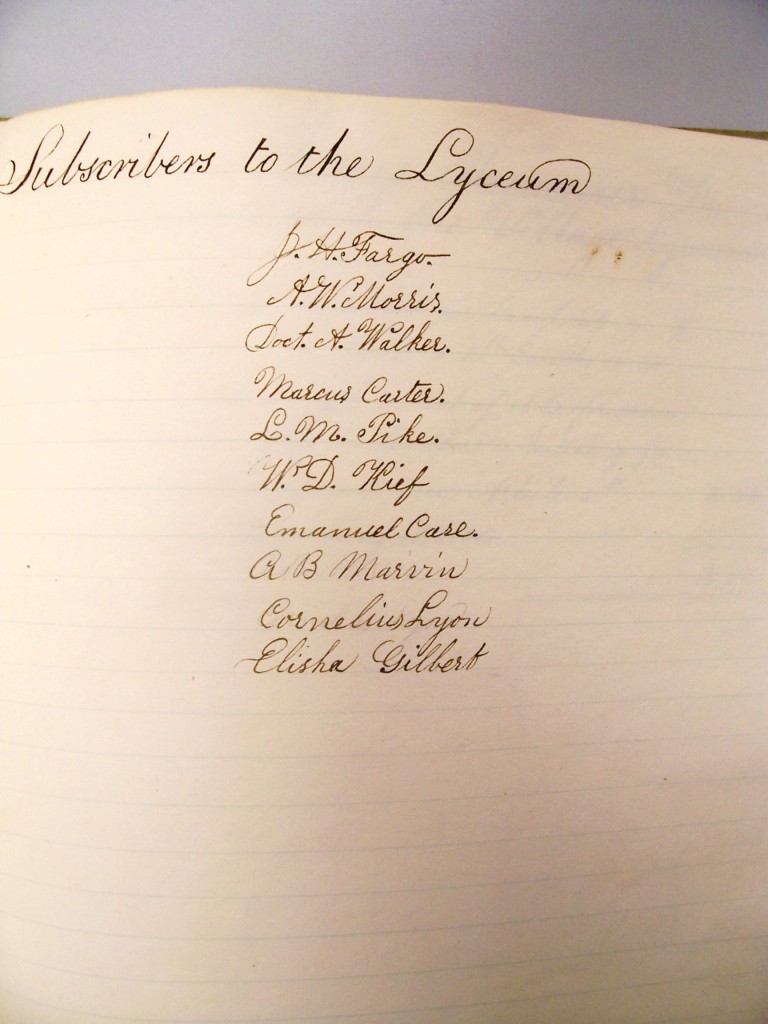
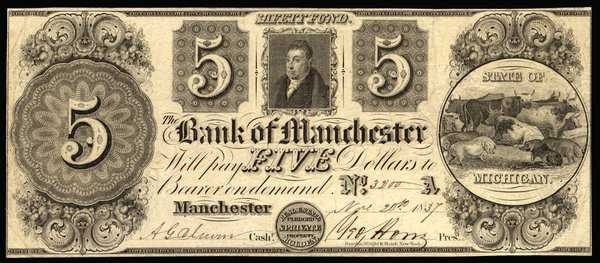








You must be logged in to post a comment Login